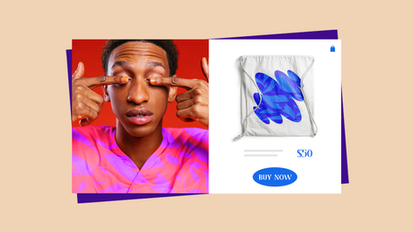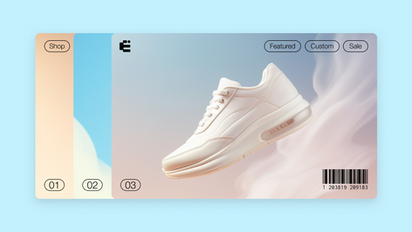The Ultimate Guide to Icons to Signify Web Development
What Is Icons to Signify Web Development?
Icons to Signify Web Development
In this modern digital age, having a professional and user-friendly website is crucial for any small business looking to attract customers and generate leads. However, hiring a professional web designer can be costly, especially for small businesses with limited budgets. This is where website builders come in handy. Website builders are tools that allow users to create websites without any coding or technical skills. There are many options available, but finding the best free website builder for small businesses can be a daunting task. To help you make an informed decision, we have compiled a list of the top free website builders for small businesses.

What Is Icons to Signify Web Development?
Icons to Signify Web Development
Here are some of the top web design trends to watch out for in 2021:
1. Dark Mode:
Dark mode has been a popular trend in web design for the past few years, and it continues to gain momentum in 2021. Dark mode not only looks sleek and modern but also reduces eye strain and improves readability in low-light environments. Many websites now offer a toggle switch that allows users to switch between light and dark modes based on their preference.
2. Neumorphism:
Neumorphism is a design trend that combines elements of skeuomorphism and flat design to create a soft, realistic look. It involves using subtle shadows, highlights, and gradients to make elements appear three-dimensional and tactile. Neumorphic design can create a more immersive and engaging user experience, making websites feel more interactive and intuitive.
3. Minimalism:
Minimalism has been a popular design trend for years, and it continues to be relevant in 2021. Clean and simple designs with plenty of white space help focus users’ attention on key elements and create a sense of calm and balance. Minimalist websites load faster, are easier to navigate, and convey a sense of sophistication and professionalism.
4. Custom Illustrations:
Custom illustrations are a great way to add personality and character to a website. They can help showcase a brand’s unique identity and differentiate it from competitors. Custom illustrations can be used to explain complex concepts, guide users through the website, or simply add a touch of whimsy and creativity to the design.
5. Asymmetric Layouts:
Asymmetric layouts break away from the traditional grid-based designs and create a more dynamic and visually interesting website. They can help draw attention to specific elements, create a sense of movement and flow, and make the design more memorable and engaging. Asymmetric layouts can be challenging to implement but can result in a truly unique and striking website.
6. 3D Elements:
3D elements add depth and dimension to a website, making it more visually appealing and immersive. They can be used to create interactive product showcases, engaging animations, or eye-catching backgrounds. With advancements in CSS and JavaScript, 3D elements are becoming easier to implement and can help create a more memorable and engaging user experience.
7. Bright Colors:
Bright and bold colors are being used more frequently in web design to grab users’ attention and create a strong visual impact. Vibrant colors can help convey brand personality, evoke emotions, and create a sense of energy and excitement. When used strategically, bright colors can help highlight key elements and guide users through the website.
8. Micro-animations:
Micro-animations are small, subtle animations that add interactivity and delight to a website. They can be used to draw attention to important elements, provide feedback to user actions, or create a sense of continuity and flow. Micro-animations can help create a more engaging and intuitive user experience and make the website feel more dynamic and alive.
9. Voice User Interface (VUI):
With the rise of voice assistants like Alexa and Siri, voice user interfaces are becoming more prevalent in web design. VUI allows users to interact with the website using natural language commands, making navigation easier and more intuitive. Integrating VUI into a website can help reach a wider audience, improve accessibility, and offer a more convenient user experience.
10. Accessibility:
Accessibility is an important consideration in web design, ensuring that websites are usable by people of all abilities. In 2021, there is a growing focus on creating accessible websites that adhere to WCAG (Web Content Accessibility Guidelines) standards. This includes features like alt text for images, proper heading structures, keyboard navigation, and color contrast ratios. By designing with accessibility in mind, businesses can reach a larger audience and demonstrate their commitment to inclusivity and diversity.
Choosing a Domain Name
One of the first steps in building a website is choosing a domain name. Your domain name is the web address that users will type into their browser to access your site. When selecting a domain name, it is essential to choose a name that is easy to remember, relevant to your brand or business, and available for registration. It is also important to consider the domain extension, such as .com, .org, or .net, as different extensions can convey different meanings to users.
Selecting a Hosting Provider
After selecting a domain name, the next step is to choose a hosting provider for your website. A hosting provider is a company that stores your website files on a server and makes them accessible to users on the internet. When selecting a hosting provider, it is essential to consider factors such as uptime, security, storage space, bandwidth, and customer support. It is also crucial to choose a hosting plan that aligns with the needs and goals of your website.
Designing the Layout
Once you have registered your domain name and selected a hosting provider, the next step is to design the layout of your website. The layout of your website includes elements such as the header, footer, navigation menu, content area, and sidebar. When designing the layout of your website, it is essential to consider factors such as usability, accessibility, and aesthetics. It is also important to ensure that your website is responsive, meaning it adapts to different screen sizes and devices, such as desktops, laptops, tablets, and smartphones.
Creating Content
After designing the layout of your website, the next step is to create content for your site. Content includes text, images, videos, and other multimedia elements that communicate your message to your target audience. When creating content for your website, it is essential to consider factors such as readability, relevance, and search engine optimization (SEO). SEO is the process of improving your website’s visibility in search engine results pages, which can help drive organic traffic to your site.
Adding Functionality
In addition to design and content, websites often include functionality that enhances the user experience and enables users to interact with the site. Examples of website functionality include contact forms, social media integration, e-commerce capabilities, and multimedia players. When adding functionality to your website, it is essential to consider factors such as usability, accessibility, and security. It is also important to test your website regularly to ensure that all functionality is working correctly.
Optimizing for Performance
Once you have designed your website, created content, and added functionality, the final step is to optimize your site for performance. Website performance refers to factors such as speed, loading times, and responsiveness, which can affect user experience and search engine rankings. To optimize your website for performance, you can use tools such as Google PageSpeed Insights and GTmetrix to identify and fix performance issues. It is also crucial to regularly update your website, monitor performance metrics, and make necessary adjustments to ensure that your site is running smoothly.

The Benefits of Icons to Signify Web Development
Icons to Signify Web Development
In conclusion, AI web builders are transforming the way websites are created by offering a fast, cost-effective, and user-friendly solution to design and development. These tools enable individuals and businesses to create professional and customized websites without the need for technical skills or assistance. With advanced features such as design customization, mobile responsiveness, SEO optimization, and e-commerce capabilities, AI web builders are empowering users to build effective online presences that drive growth and success. As technology continues to evolve, AI web builders will play a crucial role in shaping the future of web design and digital marketing.

